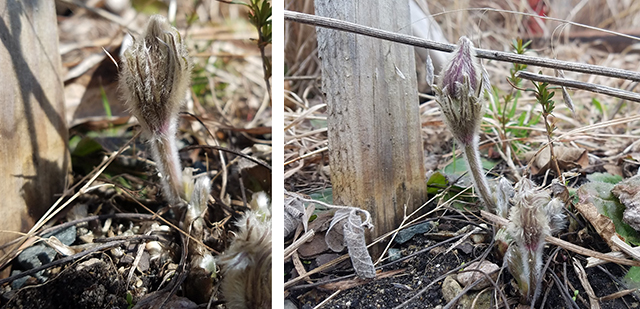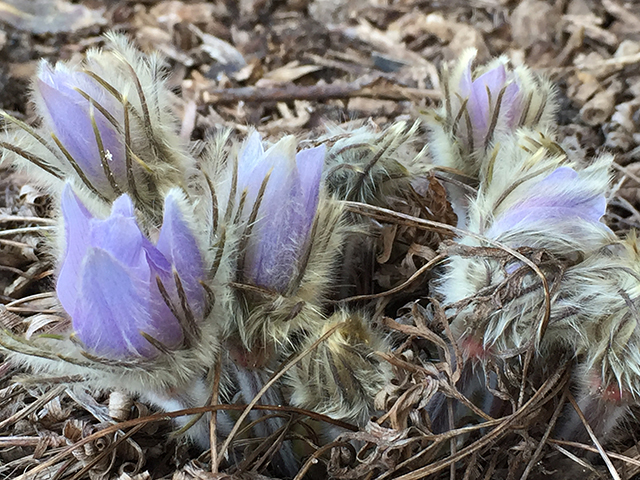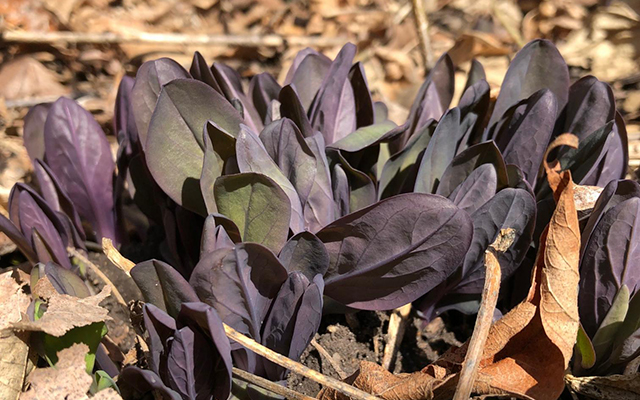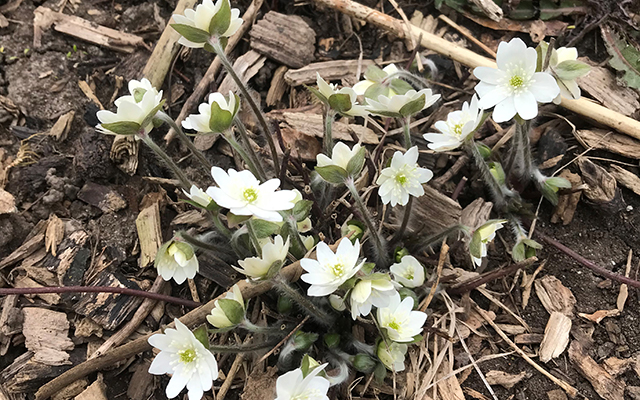Pasqueflower (Anemone patens)
Found by Drew Vandegrift, Restoration Assistant
You will have to be on your hands and knees to spot this early bloomer. The pasqueflower is one of Milwaukee’s earliest native blooming plants. The plant is fuzzy like a peach and no more than a few inches tall right now. Consider yourself lucky if you spot a flower, these plants take 5+ years to finally bloom.
Please only take photos, the pasqueflower you find may be 50 years old!

Photo of Pasqueflowers before bloom, as seen March 25, 2020, and the same plant five days later by Drew Vandegrift

Photo of a Pasqueflower in full bloom, taken last year by Kim Forbeck, Manager of Land Stewardship
Virginia bluebells (Mertensia virginica)
These Virginia bluebells that came up in UEC Manager of Land Stewardship, Kim Forbeck's yard were a hopeful sign of spring. Virginia bluebells have rounded and gray-green leaves and can grow up to 24 inches tall. Later in spring they will have cup shaped flowers that point downword at the end of arched stems. Look for them in April and May.

Photo of Virginia bluebells by Kim Forbeck, Manager of Land Stewardship
Sharp-lobed Hepatica (Anemone acutiloba) (formally Hepatica acutiloba),
This woodland beauty is one of the first to emerge in spring. Standing only 3-6 inches tall, it shows off its blossoms before sprouting a tuft of basal leaves. The flowers consist of 5-11 petal-like sepals that come in a variety of colors including white, pink or blue. Native bees and flies eager for fresh, protein-packed pollen feed on these spring ephemerals. The sharp-lobed hepatica prefers filtered sunlight and well drained, loam or clay-loam soil.

Photo of Sharp-lobed Hepatica by Michaela Rosenthal, Land Steward - Washington Park




